"After the lecture the king urged me to partake of Muli delicacies. There was a grey coloured buttered tea in a porcelain cup set in exquisite silver filigree with a coral studded silver cover. On a golden plate was what I thought to be, forgetting where I was, Turkish delight. But it proved to be ancient mottled yak cheese interspersed with hair. There were cakes like pretzels, heavy as rocks.
It was an embarrasing situation but in order not to offend His Majesty I took a sip of tea, which was like liquid salted mud."
Dr. Joseph Rock
in his writings about travel in Tibet and western China in the 1920s on his first visit to the King of Muli.
Later on he was given gifts of food by the king:
"There were eggs in plenty, two bags of beans for the horses and one of flour; one wormy ham; dried mutton; lumps of gritty salt, more of that doubtful yak cheese and butter wrapped in birch bark.
The dried legs of mutton and yak cheese were literally walking all over the terrace of our house, being propelled by squirming maggots the size of a man's thumb. I was informed that these were the choicest delicacies from the king's larder. As none of my party wanted the lively food, we gave it to the beggars, who fought for it like tigers."
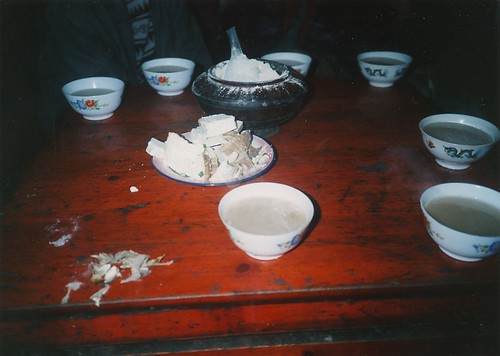
Butter tea, tsampa and yak cheese
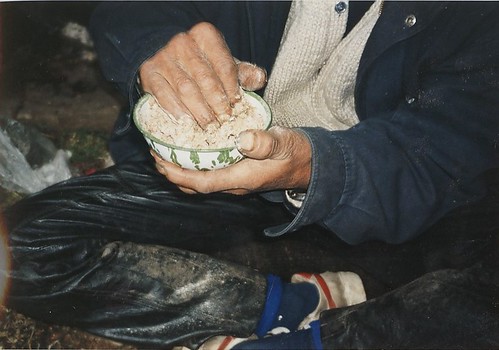
Tsampa
This is the everyday food of most Tibetans. The consistency of ground oatmeal mixed up with thick creamy milk into a muesli-like consistency, then kneaded into a dough-like bites. Apparently it tastes just like you would expect a mixture of barley and yak butter to taste.

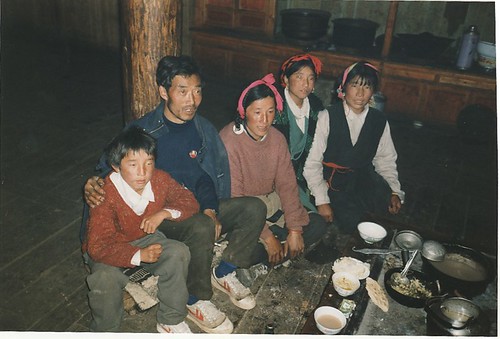
A Tibetan Dinner party
The typical dishes of Kham Tibetan cuisine: butter tea, momo bread, sour yak yoghurt and cheese with green chillis.
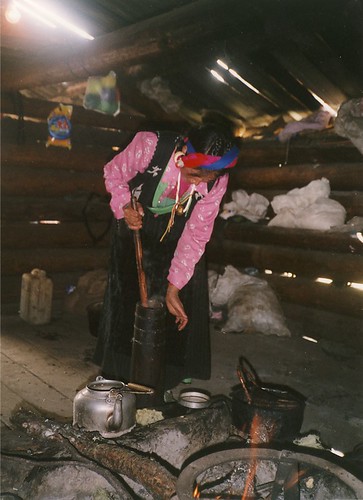
Making Butter tea by the traditional method: mixing yak milk and hot water in elongated wooden bucket with a plunger. A rhythmic sucking sound is the background music of Tibetan household life.
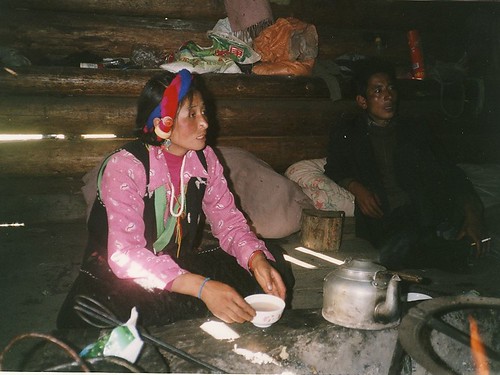
More Butter Tea
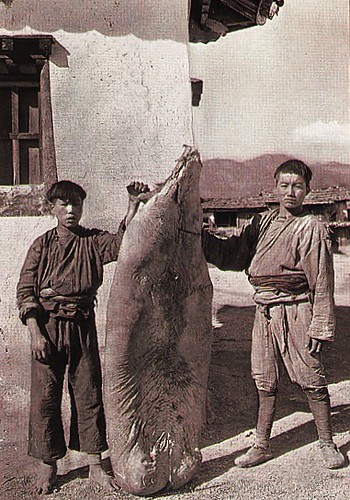
These two boys are posing with a pig that has been gutted, boned , salted and sealed - which apparently ptreserves the pork for years. The carcasses also doubled as mattresses. These pigs are still prepared today.
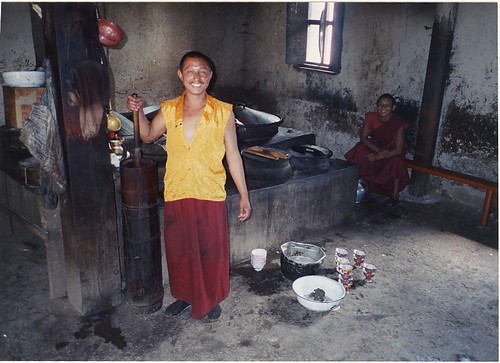
A one-eyed cook --
This cheerful monk is the head cook at Muli monastery . Here he is making butter tea, "suyou cha", by the traditional plunger and bucket method.